
Driftwood
-
Posts
466 -
Joined
-
Last visited
-
Days Won
5
Content Type
Profiles
Forums
Events
Downloads
Posts posted by Driftwood
-
-
SOLVED: Asrock TRX40 Radeon with 6950XT GPU + CorpNewt's bridge masking + fake bridge injection ssdt
This is not normally a straightforward spoof for TRX40 users wanting to attach a Radeon 6950XT card to their Mackintosh system. However, legendary SSDTTime creator (amongst other apps), CorpNewt over from Discord AMDOSX server together with the main man here @fabiosun managed to get the board working with it. The fix? A special SSSDT-Bridge involving a zero'ing the D0A7 board and rewriting it, masking out injecting a new bridge that the DeviceProperties (kindly provided by fabiosun) can attach to. And it works beautifully with full Metal operation and acceleration 🙂 Its spoofed to the 6800XT but obviously will run faster as to the faster chipset.
So here is the config.plist and SSDT -bridge he provided for all our TRX40 + 6950XT users still out there - there's life in the 3970x Threadripper yet! . Give it a go and let me know / or let fabiosun know how you get on 🙂
The config works with Sonoma latest AND sequoia latest together with the latest version of OC.
CorpNewt's explanation:




Files:
-
 1
1
-
 1
1
-
-
So no-one has done a threadripper with a Radeon 6950XT inside?looks like its back to booting in windows and prepping a PCIBridge ssdt with corpnewt so the card's path can be seen...
-
Arrakis has just sent me his last EFI for Mac OS14/15 too - GIGABYTE board TRX40 users below.
This will need updating to OC latest and latest Kexts. If I get time/anyone requires it I'll update this for Gigabyte TRX40 mono users.
ARRAKISS14-15 EFI OP 1.0.3 SEQUOIA 15.2 TRX40 GIGABYTE.zip -
FINAL SONOMA AND SEQUOIA COMBINED EFI for Asrock TRX40 from Driftwood.
Patches inside include coverage for both OS's (e.g. 14.8 to 15.6) USBX and ACPI USB, etc...
All you have to do is change the platform info to your own (this one inside is fake)
-
 1
1
-
-
Here’s a table showing recommended Secure Boot model + SIP (
csr-active-config) combos for TRX40 AMD on Sonoma, Sequoia, and Tahoe — along with why each combo works best for stability and patch compatibility.
See Excel xls Table attached.
Why not full SIP disable?
-
Setting
csr-active-configtoFF0F0000(full SIP off) will allow anything, but:-
Breaks some macOS security preference panes.
-
Can trigger security audits in some DRM apps.
-
Not needed for standard AMD kernel patches.
-
Why not keep Secure Boot enabled in Tahoe?
-
Tahoe’s new boot policy re-verifies some kernel signatures even after OpenCore patch injection.
-
With
SecureBootModelset to a real Mac, these checks can fail mid-boot on AMD and cause kernel panics or “Unable to verify kernel” messages. -
Disabling it bypasses that policy, making installs/upgrades smoother on TRX40.
SecureBoot_TRX40_Sonoma_Sequoia_Tahoe.xlsx.zip
-
-
Boot Sequoia (Darwin 24) and Tahoe (Darwin 25) without changing EFICombo TRX40 Patch set - Sequoia (Darwin 24) and Tahoe (Darwin 25) Patches to paste into your config.plist.zip
Tahoe TRX40 INSTALL - Pitfalls Checklist
1. Kernel & ACPI Compatibility
-
Patches must be Darwin 25–aware — Sequoia-only EFI won’t boot without extending MaxKernel to
25.99.99. -
Watch for ACPI quirks:
-
Some TRX40 boards drop
_CRSIRQ routing differently in newer macOS; keepSSDT-EC-USBXandSSDT-PLUGup-to-date. -
Ensure
SSDT-CPURorSSDT-CPUR-ZENmatches your CPU topology (especially if you edited_SB.PR00).
-
-
Keep
Kernel → Quirks → ProvideCurrentCpuInfoenabled — Tahoe’s CPUID checks are slightly stricter.
2. PCI & IOPCIFamily Changes
-
Tahoe has a rewritten PCI enumeration path:
-
The Disable 10-bit tags patch is still needed.
-
Don’t enable IOPCIIsHotplugPort AM5 patch — TRX40 doesn’t like it.
-
-
If devices vanish after boot (especially NVMe on chipset lanes), double-check:
-
Above4GDecodingenabled in BIOS. -
Resize BARdisabled.
-
3. GPU Drivers
-
AMD Navi / RDNA2 GPUs:
-
Works if already working in Sequoia.
-
Check that
agdpmod=pikeraboot-arg is still set if you’re bypassing board-ID checks.
-
-
RDNA3 (RX 7xxx):
-
Still experimental; some kext names changed in Tahoe — might require spoofing Device ID.
-
4. Audio (RME / PCIe Cards)
-
If Fireface works in Sequoia, it should work in Tahoe — but:
-
Gatekeeper reset in upgrade will block unsigned RME extensions until re-authorized.
-
After install, run:
Terminal bashsudo spctl --master-disable
sudo kextcache -i / -
Then re-plug your device.
-
5. Networking
-
Intel i210/i225 NICs:
-
Update
IntelMausiorLucyRTL8125Ethernetto the latest before upgrade.
-
-
If using Aquantia AQC107:
-
The Apple driver (
AppleEthernetAquantiaAqtion) in Tahoe is fussier about PCI config space; may require device property injection.
-
6. Sleep / Wake
-
Tahoe tightens non-monotonic time checks again.
-
Both
Visualtime patches must extend to Darwin 25 or you’ll kernel panic on wake.
-
-
Disable Power Nap in System Settings; TRX40 firmware doesn’t play nice with it.
7. Security Changes
-
amfi_get_out_of_my_way=1is even more necessary for unsigned kexts in Tahoe. -
Some OC users needed
csr-active-configset to03080000for post-install patches to load without SIP interference.
8. Installer Quirks
-
When installing from USB:
-
Use
Kernel → Quirks → DisableIoMapper = YESfor first boot stage (workaround for TRX40 IOMMU mapping issue). -
Re-enable after install if you need VT-d for virtual machines.
-
-
Avoid hot-plugging USB during install — Tahoe is fussier about re-enumeration.
If you get stuck in the second boot stage (Apple logo ~50% then reboot), it’s almost always:
-
Missing or mis-ranged CPUID patch for Darwin 25.
-
PAT patch not applied for 15+ kernel.
-
GenuineIntel bypass missing.
-
-
TRX40 - Installing Sequoia Watchouts:
1. Boot Hangs or Kernel Panics Before Installer
-
Cause: Missing or mis-scoped new leaf 7 allowance patch for Darwin 24.x.
-
Without it,
_cpuid_set_generic_infoblocks CPUID leaf 7 and early kernel init fails. -
Fix: Ensure the
MinKernel=24.0.0leaf 7 patch is present and enabled (we did this in your Sequoia/Tahoe array).
2. PAT (Page Attribute Table) Changes
-
Cause: Apple tweaked PAT handling in Sequoia → breaks older Ventura/Sonoma PAT patches.
-
Symptom: Black screen after the Apple logo, or login window never appears.
-
Fix: Use only the Algrey/Zormeister 15+ PAT variant. The Shaneee version can still work but tends to cause subtle GPU framebuffer quirks on TRX40.
3. Non-Monotonic Time Panics
-
Cause: The scheduler trips over AMD’s TSC drift.
-
Symptom: Panic messages mentioning
non-monotonicorQuantum::invoke. -
Fix: Keep both “Visual” time patches covering 24.0.0–24.99.99. Without them, uptime-related panics are common after sleep or heavy load.
4. PCI Enumeration Oddities
-
Cause: Newer IOPCIFamily builds in Sequoia can misread certain Threadripper bridges.
-
Symptom: NVMe or certain USB controllers missing, or devices showing in System Profiler but not functioning.
-
Fix: Keep “Disable 10-bit tags” patch active; avoid AM5-specific PCI patches, which can hang TRX40 entirely.
5. Aquantia 10GbE Driver Allocations
-
Cause: Slight API change in AppleEthernetAquantiaAqtion in 24.x.
-
Symptom: Network interface exists but won’t get DHCP / stalls under load.
-
Fix: The
alloc_dma_bufferandwithOptionspatches still work — keep them extended to 24.x.
6. Core Count Hardcoding
-
Cause: Darwin 24+ scheduler changes can misdetect AMD core counts above 16 without patches.
-
Symptom: System boots but shows wrong core/thread count; performance tanks.
-
Fix: Use the 13.3+
cpuid_cores_per_packagepatch with0x20for 3970X.
7. Quirks and Kext Expectations
-
Lilu & WhateverGreen need to be latest — older ones break in Sequoia with certain AMD GPUs.
-
ProvideCurrentCpuInfo must be enabled or CPU info patching won’t apply.
-
DisableIoMapper is still needed if VT-d is off in BIOS — but if you enable IOMMU + AMD patches, some TRX40 boards crash at boot.
Sequoia Survival Checklist tailored for TRX40 + Threadripper on AMD Hackintosh, so you can pre-flight your EFI before booting Darwin 24.x.
EFI / OpenCore Settings
-
OpenCore Version
-
Use latest release or debug build (as of now, OC 1.0.3+ recommended for Sequoia).
-
Older OC builds don’t handle Sequoia’s new kext linking behavior.
-
-
NVRAM Reset
-
Always Reset NVRAM after changing patches, kexts, or upgrading macOS.
-
Prevents stale CPU data or boot-arg conflicts.
-
-
Kernel → Quirks
-
ProvideCurrentCpuInfo =
true -
DisableIoMapper =
true(unless you’ve verified working IOMMU on TRX40) -
CustomSMBIOSGuid =
true -
PanicNoKextDump =
true -
AppleCpuPmCfgLock =
true(avoid CPU power mgmt panic on some BIOS) -
AppleXcpmExtraMsrs =
true -
CustomCPUID = only if running extra vendor masking (most don’t need)
-
-
Boot Args
-
Always keep:
keepsyms=1 debug=0x100 alcid=1Add
npci=0x2000only if PCI enumeration hangs — remove if boot OK.
-
Kext Requirements
-
Always Latest:
-
Lilu
-
VirtualSMC
-
WhateverGreen
-
AppleALC
-
NVMeFix
-
SMCAMDProcessor (latest build for Sequoia, not older Ventura/Sonoma one)
-
-
Networking
-
Aquantia: latest AquantiaAqtion.kext with Sequoia support.
-
Intel: latest IntelMausi.
-
-
USB Mapping
-
Must be done with custom SSDT or USBMap.kext — Sequoia breaks some XHCI defaults.
-
Kernel Patches
-
CPUID Core Count (13.3+)
-
MinKernel=22.4.0MaxKernel=25.99.99→0x20for 3970X.
-
-
Leaf 7 Allowance (Sequoia)
-
MinKernel=24.0.0MaxKernel=25.99.99
-
-
PAT Fix (15+)
-
Use Algrey/Zormeister 15+ only.
-
Shaneee 15+ is optional but not recommended for TRX40.
-
-
Non-Monotonic Time Fixes (Visual)
-
Two standard patches for Darwin 21–25.
-
-
PCI Fix
-
Disable 10-bit tags patch.
-
Do not enable AM5 PCI hotplug fix.
-
-
GenuineIntel Bypass
-
Goldfish64/algrey patch
MinKernel=21.0.0–25.99.99.
-
BIOS Settings (TRX40)
-
Disable:
-
CSM
-
Secure Boot
-
Serial Port
-
Above 4G decoding (enable only if needed for GPUs with >4GB VRAM and your EFI supports it)
-
-
Enable:
-
XMP / DOCP for RAM
-
SVM (if running virtual machines)
-
HPET (High Precision Event Timer)
-
Before Booting Sequoia
-
Test EFI first on Sonoma (Darwin 23) to confirm baseline stability.
-
Update all kexts to the latest release from July 2025 or newer.
-
Keep USB keyboard connected — wireless HID devices can fail during installer prelinkedkernel load.
-
-
Sonoma 14.8 all good on TRX Creator 3970X Still 🙂
Basics to help you guys.
Aquantia 107 working etc...
-
https://audiosex.pro/threads/sip-enabled-for-steinberg-and-v-r-stuff.74681/
Wondering if these SIP workaround techniques could be used for VBox ? -
@tomnic As I'm currently using Sonoma 14.2 (23C64) apparently there was a cursor / pointing device bug with this version of the OS from what I was reading somewhere and I think its not been helping the vbox guests with sluggish 'forgetful' performance. Whats the latest version of Sonoma (14.4.1) been like with pointer control in VBox guests?
-
-
3 hours ago, tomnic said:
Thanks for your appreciation on my guide, probably resetting the nvram parameters recreates the kext blacklist, I'm on 6.1.48 right now and I'll try with 6.1.50.
Yes the new AMFIPass doesn't require the specific bootflag, I'll update the guide.
@tomnic Ive updated the above to see if you spot any additions I need!
-
On 11/13/2023 at 11:06 AM, tomnic said:
But how can we get Virtualbox running on recent macOS? The prerequisite is to disable SIP and use the AMFIpass.kext with the bootflag -amfipassbeta in order to allow VirtualBox kexts to be loaded once installed, nothing more. In fact, once rebooted and allowed the kexts to run in Security section you can even disable the loading of AMFIpass.kext and remove the related bootflag, by now the kexts have bypassed the blacklist, forever!
After that you can also install Windows 11 as a VM, direct without any issue, and the performance is also great if you don't overdo the number of cores (my maximum is 2 then it starts to slow down)!!!Hi Tomnic,
Nice guide.
Ive tried this with 6.1.50 and everything working installing Win 10 guest into the Box Host on Sonoma(in the process installing Win 32bit apps I needed etc...) but on reboot and resetting NVRAM SIP to 0000000 & removing the AMFIPass kext in config.plist its back to the kernel error cant load. Any info on this?
BTW I used AMFIPass v1.40 and didn't require the bootflag -amfipassbetaMETHODOLOGY
1. In config.plist (see image) inside your boot EFI, Add the numbers csr-active-config = 03080000 (see image) into the NVRAM section of config.plist (to workaround security & Privacy Oracle Box kext sign problems with this partial SIP disable).
2. Add AMFIPass.kext details (see image) into kernel section of config.plist. Save config.plist back to the EFI /OC folder.
3. Download version 1.40 of AMFIPass.kext and copy it over onto your EFI drive's Kext folder.
4. Ensure you can reset NVRAM in Opencore when rebooting
5. Reboot, and hit space, number to reset your NVRAM.
6. Now it should boot with your SIP disabled and use AMFIpass to allow the box kernel thru.7. Download & install Vbox v.6.1.48 or 6.1.50
8. During the installation process it should ask you to sign / allow the Oracle Virtual Box / ALLOW it inside your 'System Settings' Security & privacy section.
9. After install and the kernel of box has been signed it will ask to reboot. Go ahead and reboot.
10. After reboot, locate and download/install Oracle_VM_VirtualBox_Extension_Pack-6.1.50.vbox-extpack (if using ver 6.1.50)11. Now grab a ISO from Microsoft and install your guest OS - in my case it was Windows 10 32 bit iso
12. Go thru the motions of installing the guest OS like you normally would.
13. Locate and download VBoxGuestAdditions_6.1.50.iso or VBoxGuestAdditions_6.1.48.iso and install them from a guest ISO storage drive.This will provide a number of addition hardware features and functionality.
14. Finally, fine tune your guest OS for display USB pointing devices etc...
15. If you get problems running virtual box - quit Vbox completely (stop any guest VMs running first if you can) and then rerun it by running it from within Applications folder and not as an alias as sometimes aliases get corrupted or lose sight of the software.
16 I tried then resetting SIP to Enabled and disabling AMFIPass kext inside config plist Kernel section, reboot, resetting NVRAM and booting up to Sonoma but the Kernel errors reappeared and I found they were no longer 'Allowed' by the OS. Subsequently, virtual box guest VM's failed to start. 😞
17. So went back to partially Disabling SIP (csr-active-config = 03080000) but didn't require AMFIPass to ON now that Ive installed vBox.
More on this soon...
useful links:
Virtual Box Old Builds: https://www.virtualbox.org/wiki/Download_Old_Builds_6_1and https://download.virtualbox.org/virtualbox/6.1.50/ to find the Guest Additions etc...
AMFIPass kext: https://community.macmeup.com/index.php?/files/category/3-kexts/. or payloads/Kexts/Acidanthera/AMFIPass-v1.4.0-RELEASE.zip
-
 1
1
-
 1
1
-
-
Any news on the 7970X 32 core 64 thread working under Sonoma?
-
14.2 beta
ok too
-
 2
2
-
-
-
On 10/14/2023 at 1:20 PM, fabiosun said:
I think so
but I think price will be monster
and I would like to have a platform with the change to upgrade also the cpu without changing the motherboard
trx40 missed that part
we will see
the future seems more interesting than recent past🥹
And you're not tempted by the Intel Core i9-14900K? 😉
-
On 6/6/2023 at 2:10 PM, fabiosun said:
So @fabiosun are you thinking the forthcoming 7975WX TRX50 will be viable?
-
@Jaidy PCIe 5.... Looking at the random write/read speeds its probably not worth it atm. Cache problems aside the tech looks great in theory. But we wait and see. As to the T700 not being stable under MacOS seems strange. Did you try Disk Utility in macOS Recovery to format the volume?
-
-
10 hours ago, Jaidy said:
Was this problem ever solved? I just populated all of the m.2 ports on my machine, and occasionally it won’t boot, or boot to black screen, or restart midway. Though once it gets to desktop, things are solid.
also I added a second GPU (7900XTX)..
You should check resources - PCIE which ones are directly connected to CPU and which are to chipset. All devices inc USB devices are taking up resources. DO a count and subtract from the total available for your motherboard. Maybe take out a device - a drive, a GPU etc... (experiment) until you see a happy compromise.
For example, The ASROCK TRX40 Creator features 88 PCIE lanes, 72 of which are useable to the end user. The Threadripper AMD CPUs utilise 56/64 PCIe 4.0 lanes.Chipset vs. processor allocated PCIe lanes
The PCIe lanes on a motherboard originate either from the processor itself or the motherboard chipset.
Generally, the processor lanes are reserved exclusively for the graphics card x16 slots and M.2 slots for high-speed SSDs, as they require to move data without being bottlenecked by the chipset.
On the other hand, chipset lanes connect to onboard USB, other M.2 and PCIe slots, and SATA. The chipset itself transfers data to the processor via a dedicated 4-lane PCIe bus.
So, all devices connected via PCIe lanes to the chipset will have a cap on their maximum bandwidth leading to bottlenecks
Don't forget to run MMIO Opencore checks as u go.-
 1
1
-
-
-
Great to see the Fireface800 and TI Firewire PCIe card chipset still working in Sonoma! 🙂
DRIFTWOOD SONOMA 14.0 CONFIG PLIST (OC 0.9.5) for Asrock TRX40 Creator ATTACHED - not bothering with BT / Wifi in this config. Just Aquantia networking here!
-
 1
1
-
-

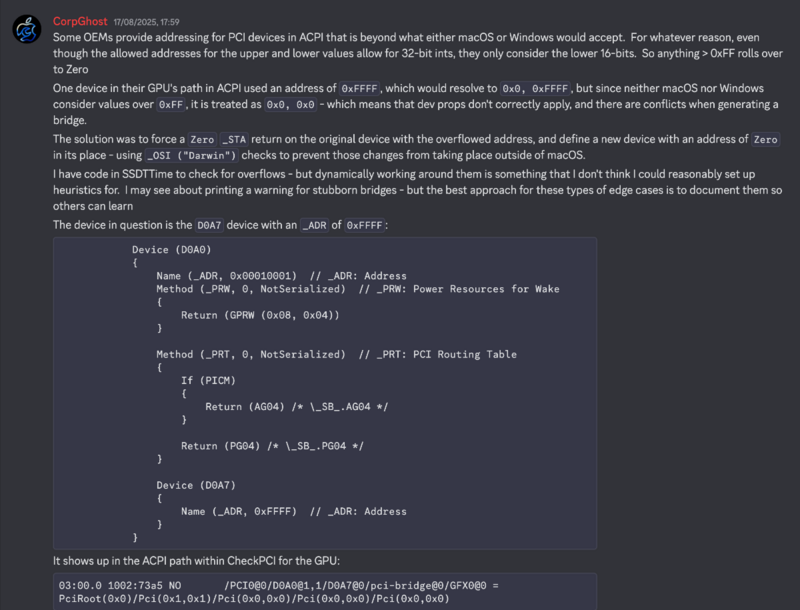
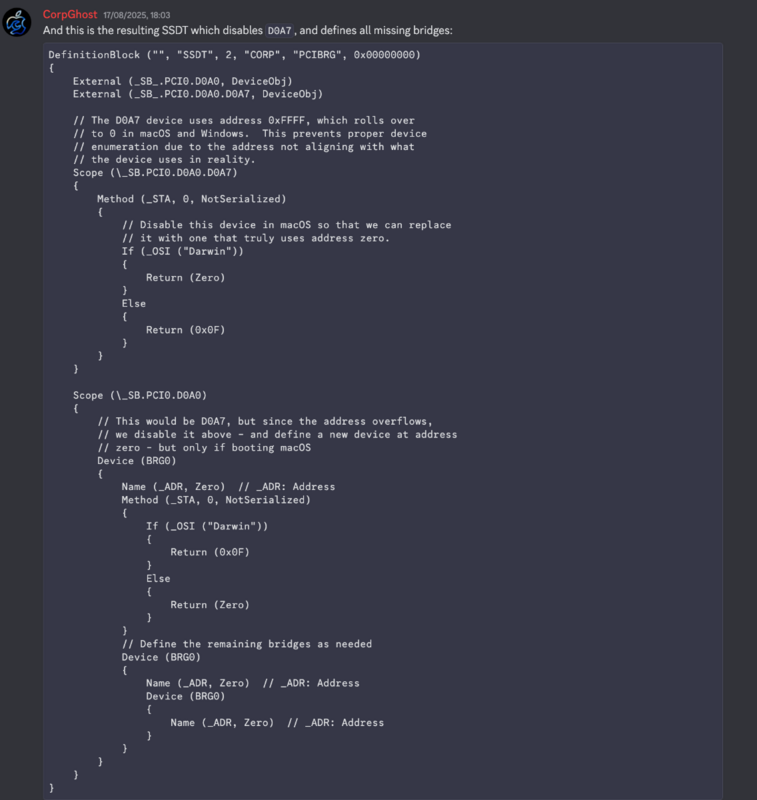
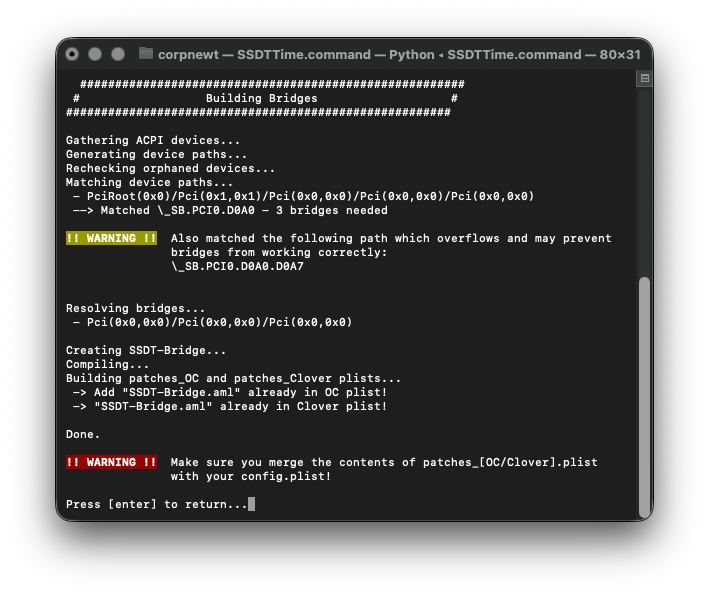
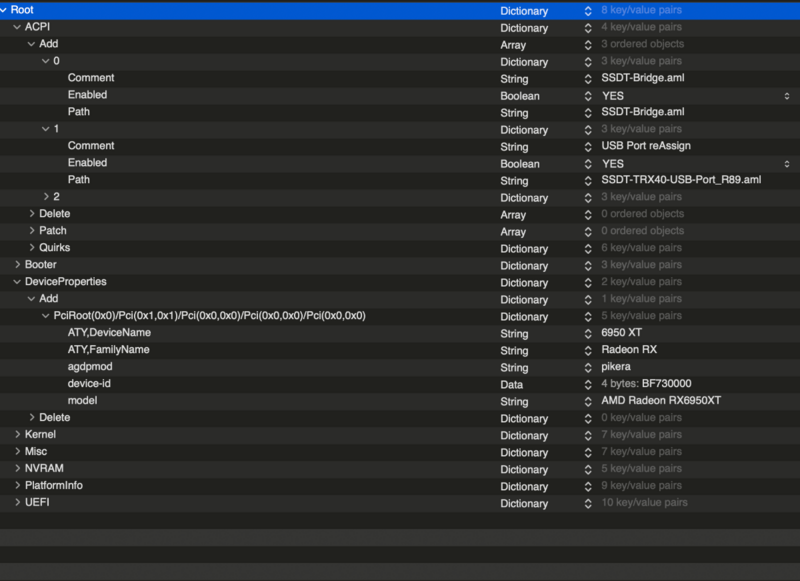
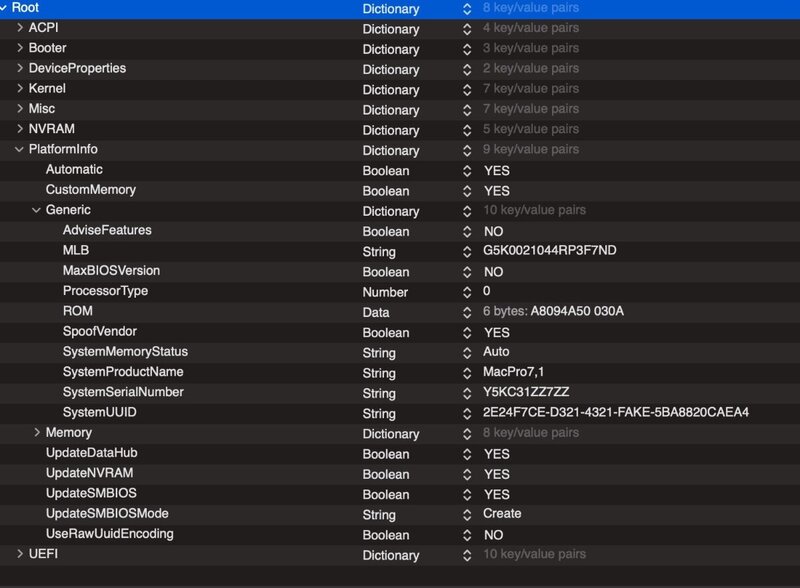
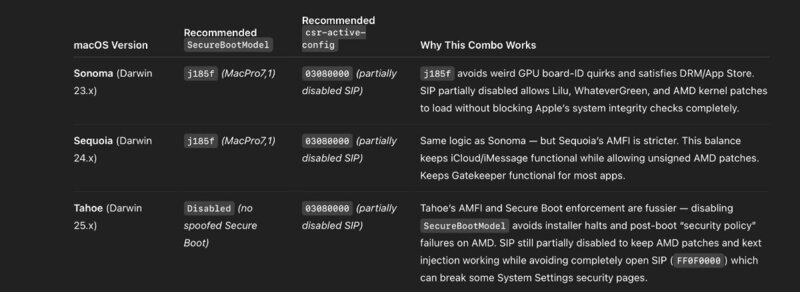
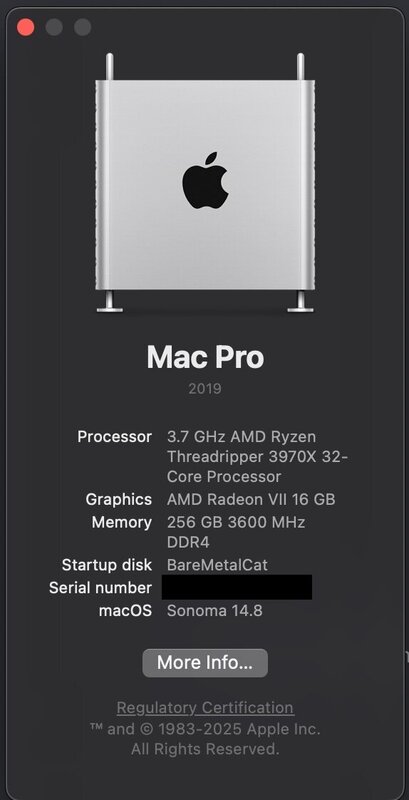
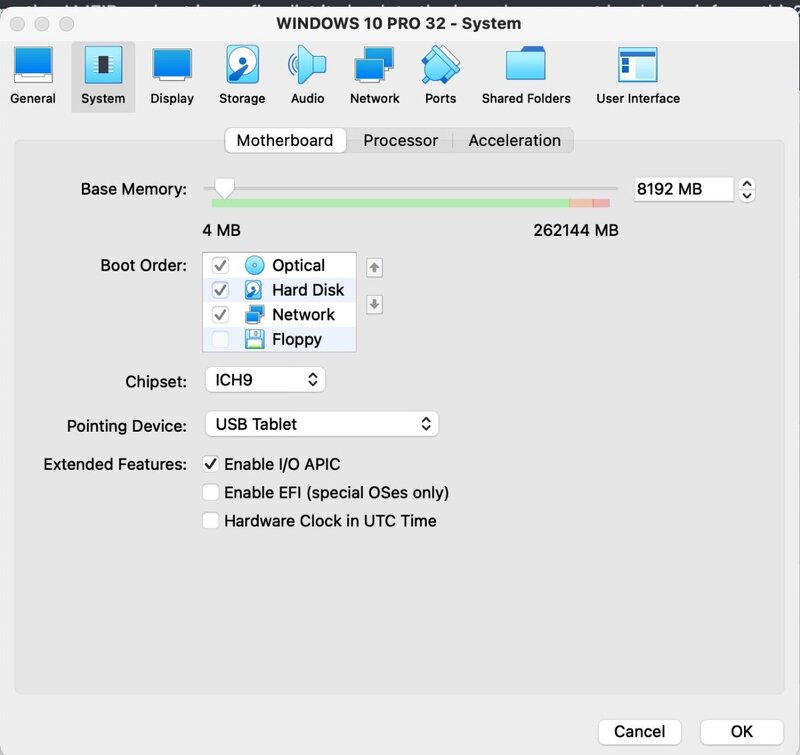
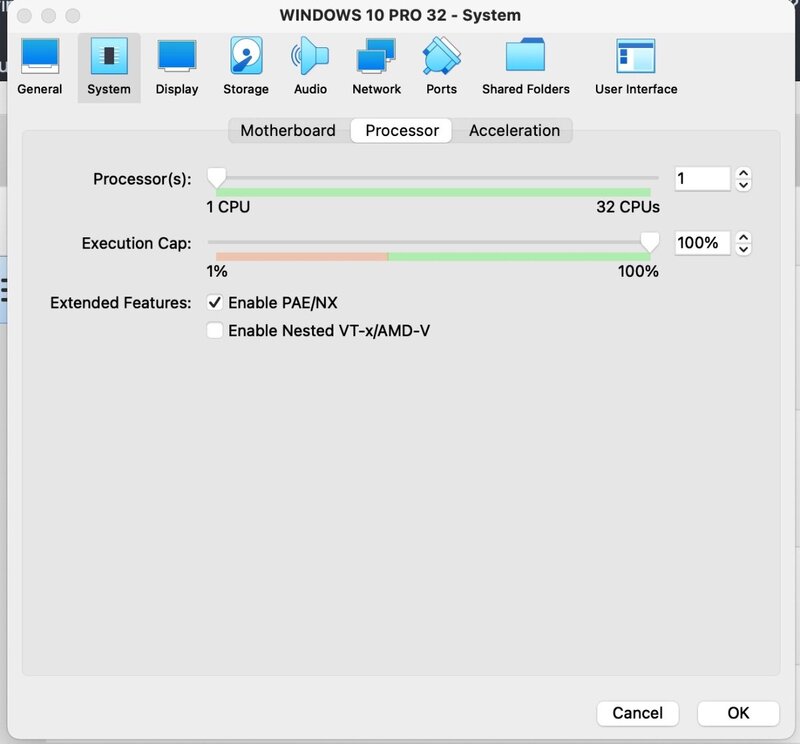
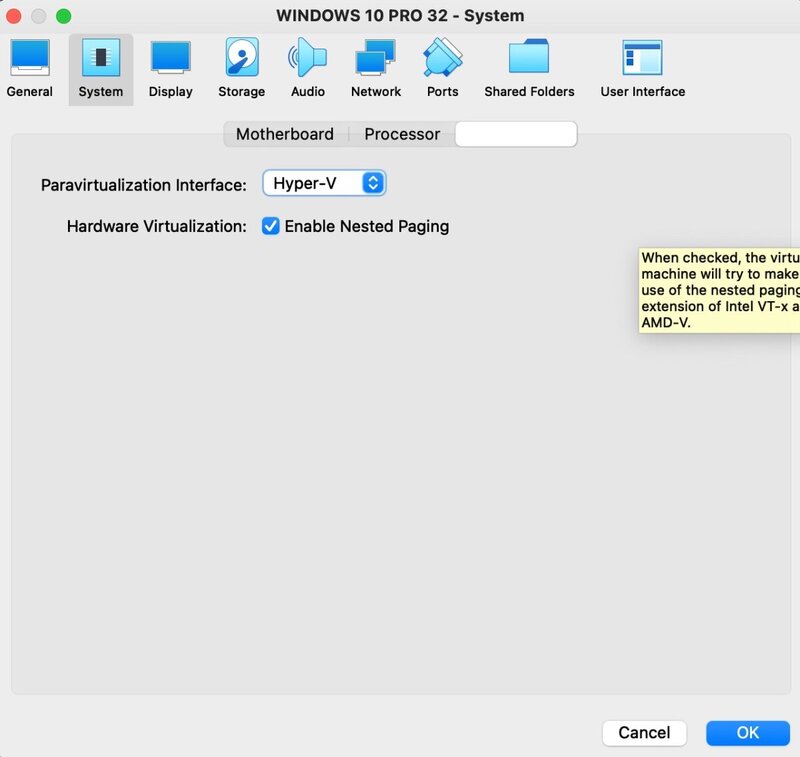

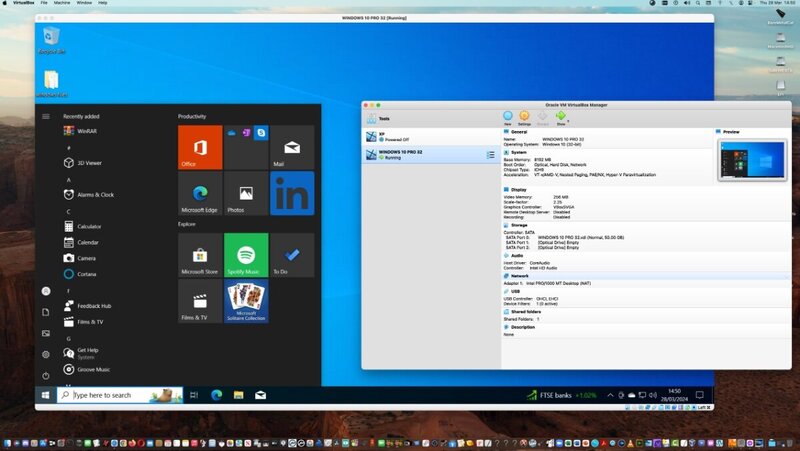
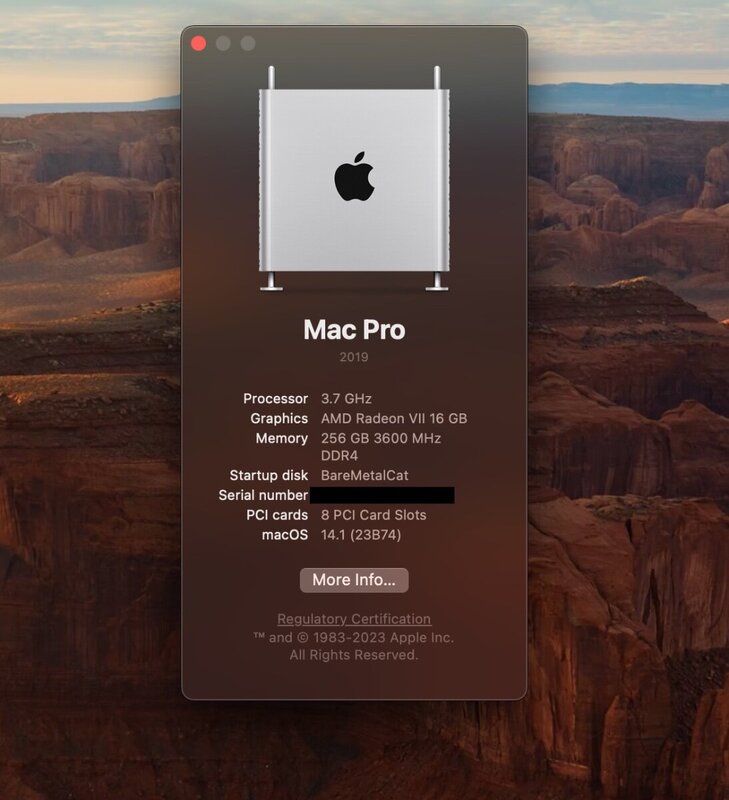
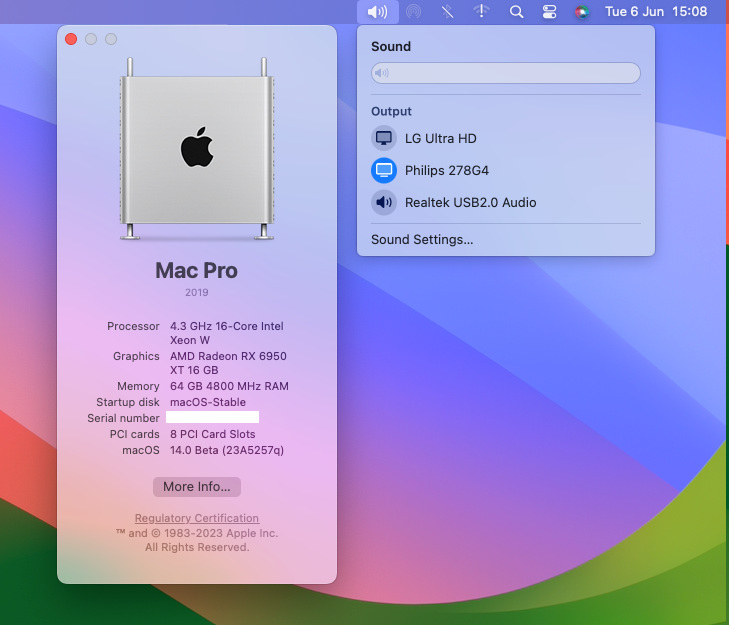
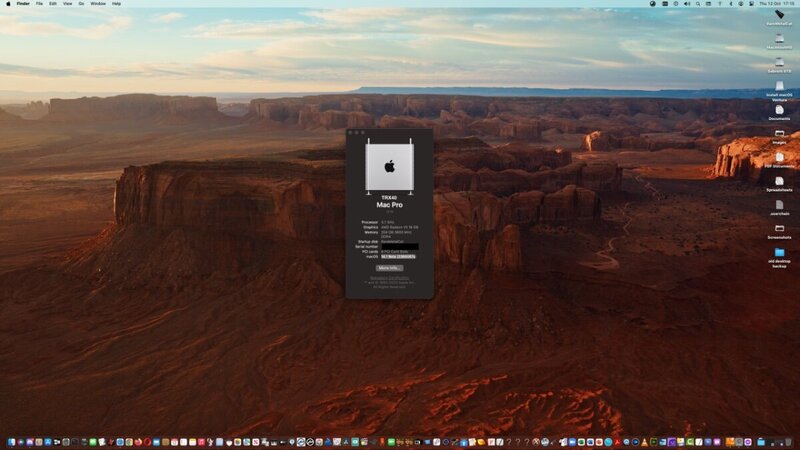
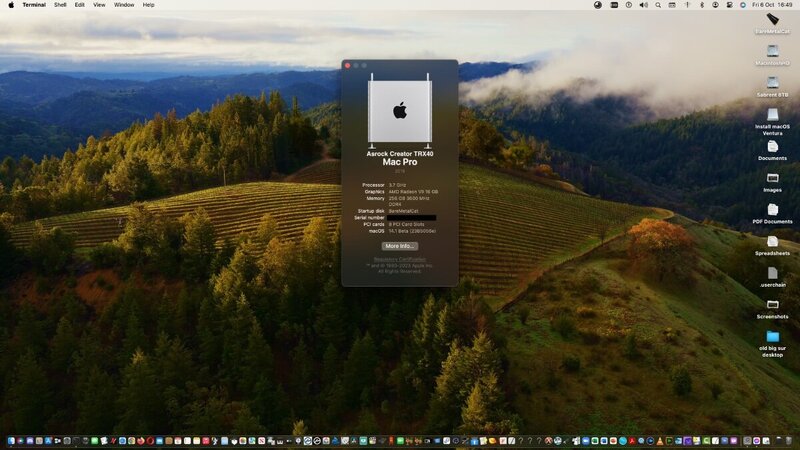
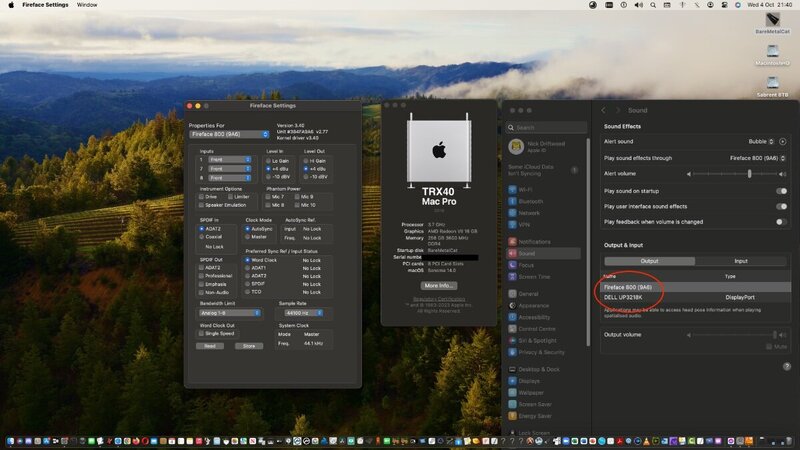
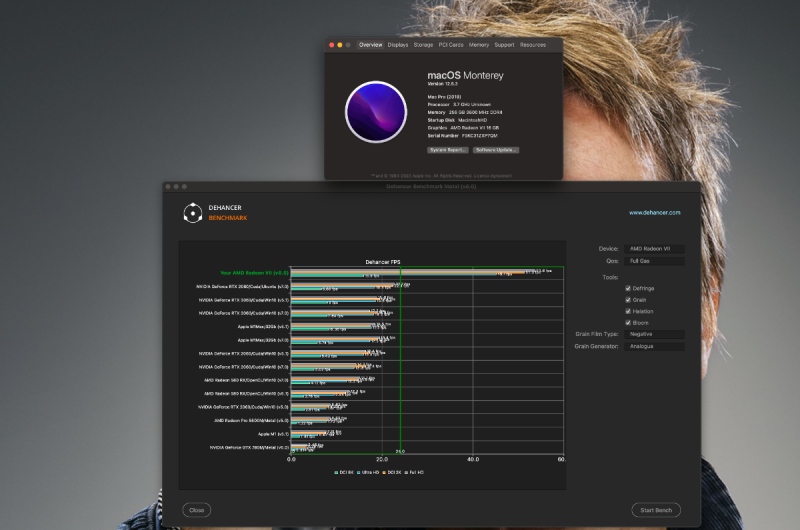
[Discussion] - TRX40 Bare Metal - Vanilla Patches
in General
Posted · Edited by Driftwood
Resulting GEEKBENCH speed test of the Radeon 6950XT with the new SSDT Bridge 🙂
